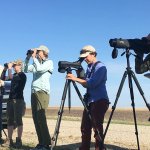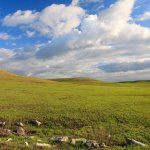In the south of Honduras, in the department of Valle, lies Salinera Santa Alejandra. This is where I grew up, learning about salt, mangroves, and animals that live and visit us at different times of the year. Nature has always been a part of my life and protecting it is important to me.
Eight years ago, marked my first interaction with shorebirds, when I discovered small nests, made with shells, small rocks, and branches, each with 3-4 eggs, that were watched by parents willing to fight to protect them. After watching this behavior, I wanted to learn more about these birds, which always nest at the start of the rains on the shores of the salt lakes. I began to monitor the lagoons month by month in search of nests or chicks hoping that all would be born. Little by little, I realized that human activities have an impact on all ecosystems and therefore on the species that live there.
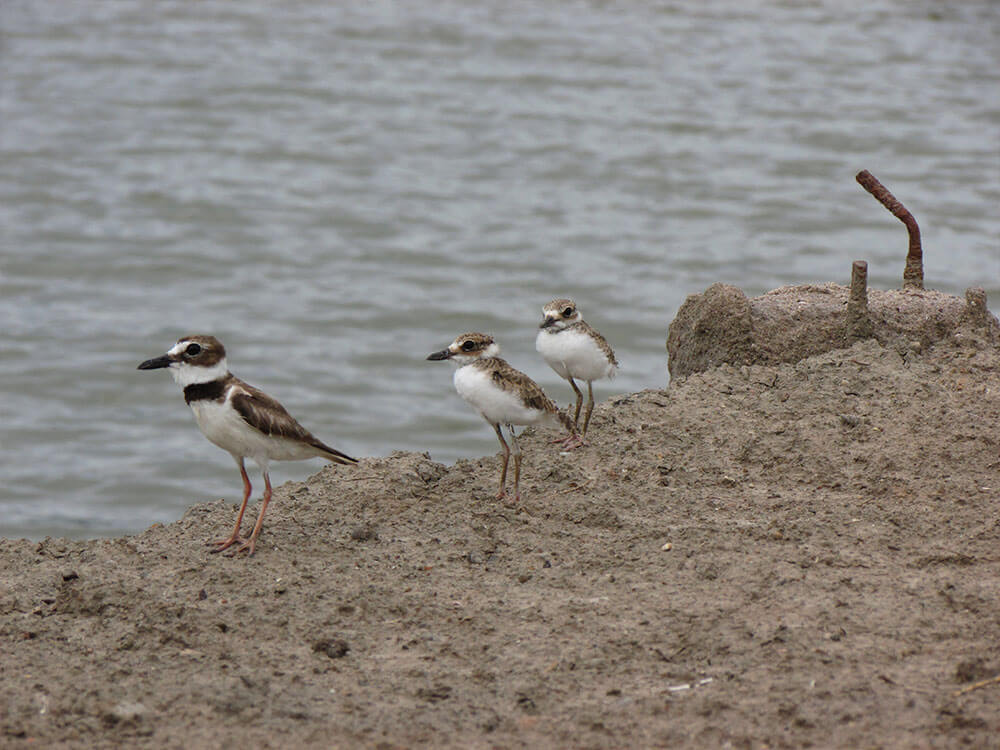
Chicks with the adult male of Wilson Plover. Photo: Julia Salazar
I have always believed that conservation should be linked to human activity, especially productive activities, thus I decided to start a conservation and environmental education program at my father’s salt company to highlight the important role for salt production in conservation.
It was not an easy start, since the mindset of a producer is to generate and increase profits, and it was not clear to him the role of conservation. Thus, he needed an attractive strategy, one providing benefit to the producer but above all that had the expected impact. Since my school years, I knew that almost no one had heard before where the salt came from or how it was produced, so I decided to tell this story first.
I started by advertising the salt company on social networks, taking photographs of the production, of animals and plants that I found in the salt pans. This caught the attention of schools and universities that soon began to visit us.
This was how I understood that there was a great opportunity for environmental education, by promoting educational tours around the salt pans, where students could have a unique experience, seeing artisanal salt production and the imposing mangroves and birds feeding without fear in the lagoons a few meters away. Since then I have been the tour guide leader, I tell visitors about the history of the salt industry in my family, how we make salt, and how we work to protect our mangroves and shorebirds. Undoubtedly, I created an alternative service for the salt industry, but at the same time I ensure that each student who leaves the salt pans takes with them new stories and knowledge that can motivate them to learn more about our ecosystems. In Honduras there is no culture of conservation and I believe that we desperately need to begin to know the natural treasures that our country has, so that more people join the endeavor of conserving them.
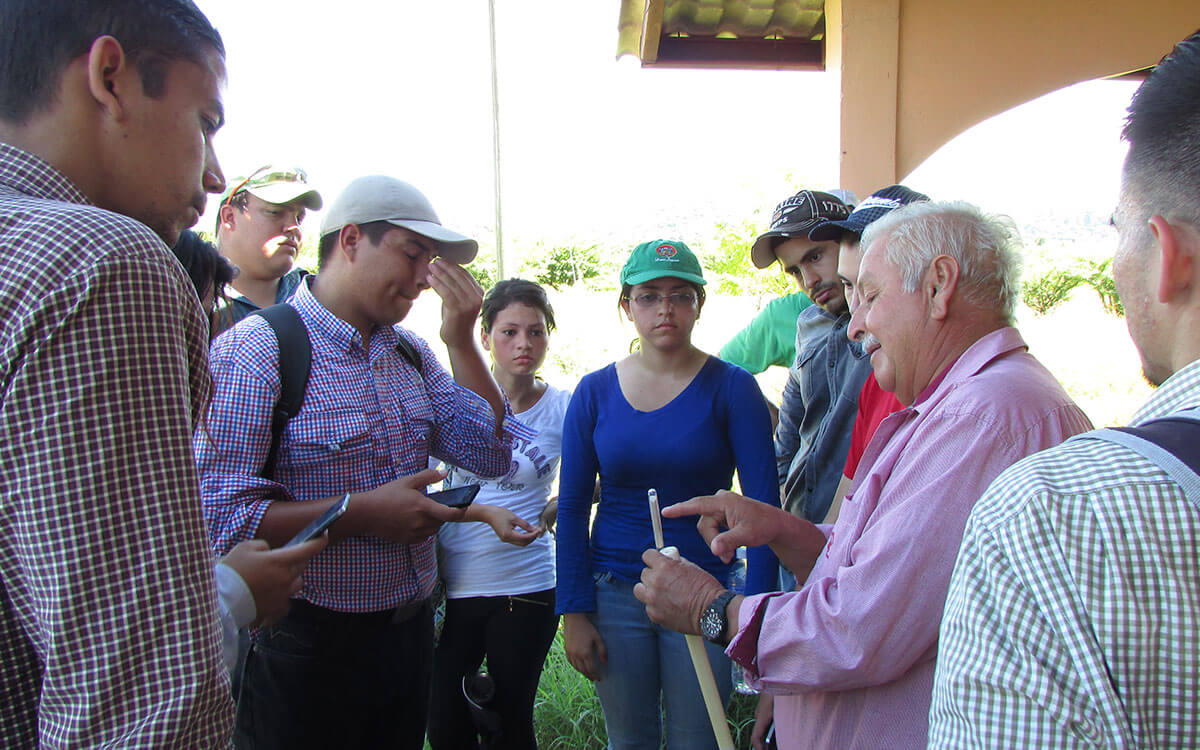
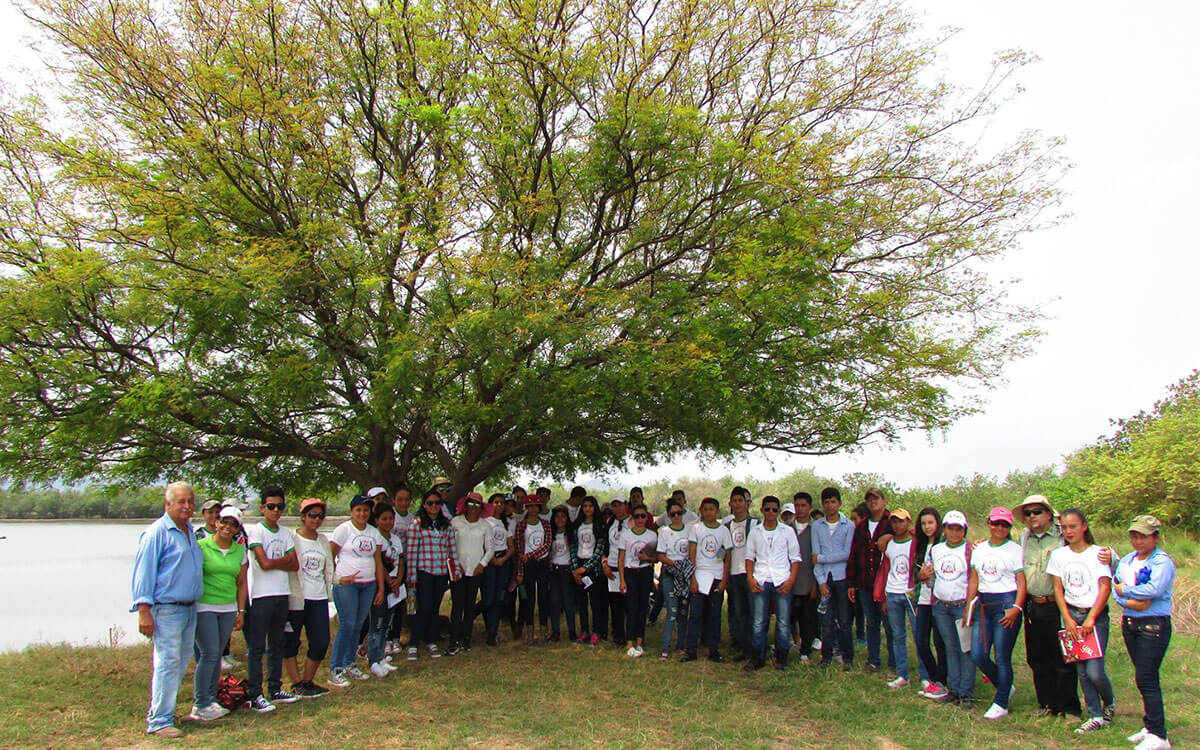
Left: Producer and owner of Salinera Santa Alejandra during an educational tour, explaining to university students the process of measuring salinity. Right: Visiting college students from the interior of the country. Photos: Julia Salazar
My dad as a producer is also now a shorebird advocate. He has a different mindset and he takes part in the tours, welcoming the students and sharing the company his father founded. When we allow the producer to be part of these initiatives and show them the amazement and curiosity of many for the work they do, we are opening important ways to add conservation to the productive sectors of Honduras, this is an important step to create alliances and join efforts with the vision of producers without forgetting their needs, but in a more sustainable and friendly way with shorebirds and our ecosystems.
We are currently developing a small book by the salt company called Sal para la Conservación (Salt for Conservation) that seeks to promote shorebirds from the view of the salt industry sector, promoting the sustainable outcome of this essential product for humans around the world. We continue with the tours and we have changed the image of the company, for one that represents all our activities aimed at educational and scientific tourism, shorebirds’ conservation, and the history of our salt.
Cover Photo: Panoramic sunset at Salinera Santa Alejandra and lagoons where shorebirds nest and feed. Photo: Julia Salazar





